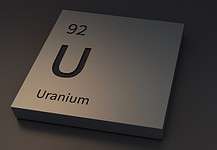FIRE represents one of the greatest threats to workers in both open cut and underground mines – it can take very little for a minor outbreak of fire to escalate into a disastrous conflagration. The capacity to stop a fire in its tracks must be a top priority for mining companies, according to Delta Fire Australasia managing director Bob Grieve.
The Australian mining industry has made significant, commendable advancements in safety in the 20th century, and in the past 25 years in particular. However, mining remains an inherently high risk and challenging operating environment, where the impact of a fire can have catastrophic consequences; challenges abound both above and below ground.
In underground mines in particular, operating procedures have undergone many fire safety improvements, but the same cannot always be said for some of the equipment used in mines – equipment that has the very real potential to catch fire, triggering a major blaze. The major danger lies in the speed with which a small fire can become an inferno and this, coupled with the remoteness of many Australian mining operations, means that fire prevent is key.
Fire risk assessments and fire prevention, protection, suppression and evacuation procedures are critically important for worker safety and asset protection.
Depending on the type of mining operation being undertaken, mines typically have a host of fire safety challenges, from underground emergency lighting control panels to essential power cabling installations, generators, batteries and UPS equipment, conveyors, lifts, control rooms, sub-stations and fuel stores. Most of these elements are housed in cabinets or enclosures. Above ground, a significant fire safety challenge is to be found in the specialised plant: monster mineral-moving vehicles such as ore haulers, draglines, haul trucks, dozers and shovels on which mining and mineral extraction operations depend. Not only is this equipment extremely expensive to replace and likely to incur a considerable delivery lead time – such equipment can often take many months to replace – damage may well result in substantial operational downtime and a major disruption to business continuity.
In the event of a fire there is also a very real life safety threat to the equipment’s operators. When it comes to the question of risk assessments, it is important to remember that Australian Standard 5062-2006 (Fire Protection for Mobile and Transportable Equipment) specifi es that a risk assessment be undertaken in conjunction with stake holders, such as OEMs, mine management, operators, maintainers of the equipment and suppliers of fire suppression equipment, to ensure that risks are identified for all facets of a machine and its environment. The precise nature of the fire hazard that mineral moving vehicles present has to be carefully considered if the detection and suppression solution is to offer maximum protection. Many machines operate virtually around the clock, 24 hours a day, seven days a week in what can only be described as an aggressive environment. The vehicles have to contend with high ambient temperatures, intense temperature variations in the engine compartment, and near-constant and substantial vibration and dust.
The areas most at risk of fire on the heavy plant and machinery used in mining are engine compartments and braking systems, with mechanical and electrical failures or malfunctions accounting for the majority of fires. Considerable heat is generated by engine blocks, manifolds, turbochargers, and vehicle braking systems. In addition to the equipment’s fuel and the risk of fuel line ruptures, other fire risks include any number of flammable liquids present throughout the engine compartment, including hydraulic, brake, automatic transmission and power steering fluids, along with combustible accumulated grease on the engine block, for which frayed or damaged electrical wiring can easily provide the ignition source. Investment in fire safety measures for engine compartment are most likely to have the greatest impact and payback, particularly as an uncontrolled engine fire also places the equipment operator at risk of serious injury or death.
A number of specially-developed vehicle fire protection systems are now available to address these particular challenges in the mining industry. They can be generally classified as: linear or spot detection-based
dry chemical pre-engineered systems; and pre-engineered and engineered foam spray systems.
Broadly speaking, systems that utilise linear or spot detection devices alert a control module, which in turn alerts the vehicle operator that a fi re has been detected and subsequently activates a fire suppression system. Heat from the fire activates the linear or spot detection devices installed at strategic ‘at risk’ areas of the vehicle; the control module immediately sounds its integral alarm and, after a pre-set time delay period, the control
module actuates the fire suppression system. The system can also be operated manually. The suppressant agent storage cylinders are pressurised using nitrogen expellant gas cartridges. A dry chemicalextinguishing agent is expelled from the storage cylinders via a network of distribution hoses leading to the previously identified fire-prone areas, with discharge nozzles directing the suppression agent. Foam fire suppression systems
are available in both engineered and pre-engineered designs. Pre-engineered systems use pre-set parameters for the distribution of pipework and nozzles, whereas engineered systems employ a calculated approach using sophisticated software and risk assessment processes. Aqueous Film Forming Foams provide cooling of hot components, reduce the chance of re-ignition and can be used to cover fuel spills that may occur under a vehicle. Options have been designed to allow various levels of protection, from fully automatic detection and suppression systems with full engine shut down and cab monitoring, to simple suppression-only systems with manual actuation.
Other benefits of these systems include: flexible siphon tubes for horizontal cylinder mounting; reinforced, extra strong brackets with the smallest possible space demand; and larger capacity cylinders with higher flow valves.
The huge size of the machines on a mine site means that, in many cases, if no fire detection or suppression system is installed, a vehicle operator may not be aware of a fire until it is well advanced. Fire can quickly engulf the engine compartment, directly threatening the life of the vehicle operator and possibly cutting off their escape route as flames spread via wheel arches or ignited fuel spillage. To overcome this high-risk challenge,
many mining companies now consider it essential to install a solution that provides direct personal protection for operators. One such system utilises a liquid fire extinguishing agent that emulsifies and cools heated materials more quickly than water or conventional foam. This extinguishing agent has already become widely adopted in the Australian steel industry where it is used for protecting smelting-operation pot carriers that transport superheated materials.
The system is designed to disperse the suppression agent throughout a machine’s operator’s cabin, spraying the vehicle operator from above and below. This reduces heat and smoke in the cabin area, as well as minimising the prospect of injury should the operator have to exit the vehicle. The liquid f re suppression agent knocks down flames, reduces smoke, eliminates heat and cools superheated objects and surfaces. Objects wetted with the agent will not support combustion and are protected from heat and fame. Most significantly, the agent is non-corrosive, non-staining and is safe when sprayed directly onto a vehicle operator. The system also offers an ‘escape component’, incorporating an escape hood and exit path spray. The escape hood withstands temperatures of up to 1000 degrees Celsius for a short period of time, to enable a vehicle’s operator to safety exit
when in close proximity to excessive heat or flames. The exit path suppression agent spray is designed to provide a safe ‘corridor’ to allow the operator to exit the vehicle. In addition to providing operator safety, this system can also be used to provide fire suppression for areas susceptible to damage from radiant heat. A tyre spray component option can be installed that will wet the rubber tyres of a vehicle, extending tyre life by reducing the damage caused by charring and flame contact. In addition to mineral-moving equipment, there are any number of pieces of critical equipment at a mine that require dedicated fi re protection. Typically, these include unoccupied switch rooms, switch boards, cable trays, electrical cabinets and machinery control cabinets, all of which are essential to maintaining uninterrupted mining activities.
The particular challenge with fire protection for mining equipment housed in cabinets or enclosures is that there are a number of factors of paramount importance: speed of reaction; reliable unsupervised detection and suppressant discharge; intrinsic safety requirements; and essential capability to stop a fire in its tracks precisely where it breaks out, and before it has any opportunity to take hold and spread. A tube-based system that combines detection and suppression into a single package is an ideal solution: the system comprises an extinguishing agent cylinder that is attached to purpose-designed tubing. The leak-resistant detection tubing is a linear pneumatic heat sensor that reacts to a fire by bursting at the point nearest the greatest heat. This triggers the automatic discharge of the contained fire suppression agent, extinguishing the fire precisely where it starts and before it can spread. The detection tubing is flexible, enabling it to be routed throughout each enclosure that needs protection. There are two highly effective options for fire protection systems for cabinets and
enclosures: direct systems and indirect systems. In a direct system, the detection tubing performs a dual function: it is both the detection device and the suppressant delivery system. In an indirect system, the tubing is utilised as a detection and system activation device, but not used in the agent discharge process. In an indirect system, the rupturing of the chemical-resistant tube results in a drop of pressure that causes the system’s indirect valve to activate. This diverts flow from the detection tube, and the agent is discharged from the cylinder through diffuser nozzles, flooding the entire enclosure.
A key benefit with both direct and indirect systems is that they can be activated only by a real fire, so there is no prospect of production-disruptive false alarms or unnecessary agent discharge. A pressure gauge on the cylinder allows quick and easy checks to be made to ensure that the system is always operational. Making the correct choice of suppression agent is important, because the correct fire suppression agent must
be matched to an individual fire risk. Options include clean gaseous agents such as 3M Novec1230 Fire Protection and carbon dioxide, as well as ABC dry chemical powder and foam. Novec1230 quickly knocks down
Class A, B and C fires with no risk of thermal shock damage to delicate electrical equipment. It is electrically non-conductive and non-corrosive and leaves no oily residues, so clean-up operations are unnecessary following a suppressant discharge. Carbon dioxide is a popular, versatile and effective fire suppression agent for unoccupied enclosures and, like Novec1230, requires no agent clean-up, so business-critical installations can be up and running again in the shortest possible time. ABC powder insulates Class A fi res by melting at between 182 degrees Celsius and 205 degrees Celsius. The powder also breaks the chain reaction of Class B and Class C fires, those involving flammable liquids such as petrol, diesel, solvents, lubricants and spirits, and flammable gases such as butane and propane, by coating the surface to which it is applied.
Like the vast majority of safety and asset protection measures implemented by mine operators, fire safety provisions cost money. However, the cost of providing effective fire protection is miniscule when compared with the capital cost of replacing damaged or destroyed equipment or lost revenue due to the destruction of a business continuity critical asset. Add the human tragedy of loss of life into the cost equation and all expenditure calculations quickly pale into insignificance.
Addressing the mining fire safety challenge
Advertisement







































